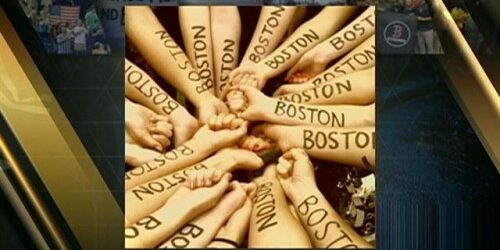As a Bostonian, this was a tough week for me. My mind was less on work and more focused on updates from my family who had just missed being downtown when the already infamous Boston Marathon bombings occurred. My thoughts were with my family and friends back home, with the hundreds of injured, and three that passed because of the bombings.
As the hunt for the suspects took place, my SEO mind began to come in to play. I noticed the ways social media played a role in the case, the aftermath of the attacks, and the news. From one of the suspects Tweeting on the run, to Youtube clips of the bombings from civillians, social media was active during this difficult time. As many of my own Facebook friends are Bostonians, for me it also acted as a method of knowing my friends were safe.
Tweets From the Suspect
Reporters were glued to their computer screens after the Twitter handle of suspect, Dzhokhar Tsarnaev was discovered. His follower count has shot to 91,392 at present. As the Twitter account can not be proven real or fake, the Tweets cannot be used as evidence yet news teams and viewers took great interest in them. The tweet below was especially noted in reports.
It was also noted that the suspect continued to tweet while on the run, but did have the location tracker turned off on his Twitter. The way we followed Twitter within this case is a big statement on how dependant on social media we are as a culture and the number of followers his Twitter account is currently up to is a testament of that. The problem hits when followers become a badge of honor. Should so many people have followed Tsarnaev’s Twitter, did he consider the followers a reward for his crime?
Social Media to Inform
The use of social media to inform was of extreme importance in the case as well. Sometimes more current than on-line news sources, Twitter and Facebook were used to stay updated. Twitter and Facebook even helped by a link spreading where people could tune in to the actual police radios of the cops searching for the suspect.
Keeping tabs via Facebook was the most successful way for me to stay informed, though also scary. Friends who lived in Watertown were reporting the sounds of gunshots and posting pictures of police outside their homes. This was before news stations were reporting they knew where the suspect was hiding, and then, victory the suspect had been found and Facebook knew it first.
The Facebook reports from friends also made the event much more real. I haven’t lived in Boston for over 8 years now but still go back often to visit family and friends. Hearing it from their social media accessing devices rather than the news put things in perspective, “wow, this is really happening, to the people I love in the town I grew up.”
Though there were some news stations filming the marathon, it seemed many had left by the time the bombs went off because most of the runners had already finished the race. The clip I saw over and over again was that of a runner looking down at their shoes then up as the explosions went off and running frantically. Again, seeing such raw footage of what went on makes a far bigger impact on viewers than seeing it from professional news cameras that have been set up. It is not clear whether the raw footage was intentional for this fact or if the news station had not caught the bombings on camera.
Social Media to Come Together
The most important way I saw social media being used through all of this was as a source of comfort. The hash tag #BostonStrong was posted all over Twitter and Instagram. It showed a resilient city bouncing back from tragedy. Social media also made it easy for money to immediately be raised after the fact to benefit victims and their families. Created just seven hours after the bombings occurred, The One Fund raised money with the help of social media. From Boston sports teams to celebrities and politicians, it didn’t take long after the launch for the One Fund to be in full effect.
In posts about the One Fund, the #BostonStrong hashtag was essential. Clicking on the hashtag within Twitter, you can see all the support for the charity and the city itself. We saw how social media allowed us to band together from Boston and across the globe to seek relief from tragedy. Outlets like Twitter and Facebook also allowed for people to reach out to the police force and first responders of Boston to thank them for their help.
Through tragedy, we have seen the impact of social media on a global level. It helped us remember that in a world where tragedy strikes, there is still good and we must band together to show it.
#BostonStrong



